Hetrogenous catalysis|stronger and weaker acid|electrophile| hydrogenation addition of H2
Step by step video solution for Hetrogenous catalysis|stronger and weaker acid|electrophile| hydrogenation addition of H2 by Chemistry experts to help you in doubts & scoring excellent marks in Class 12 exams.
Updated on:21/07/2023Similar Questions
Knowledge Check
Vladimir Markovnikov rule:
Alkenes undergo electrophilic addition reactions. It is triggered by the acid acting as a electrophile toward π-electrons of the double bond.
Markovnikov's rule states that when an unsymmetrically substituted alkene reacts with a hydrogen halide, the hydrogen atom adds to the carbon that has the greater number of hydrogen, e.g.,
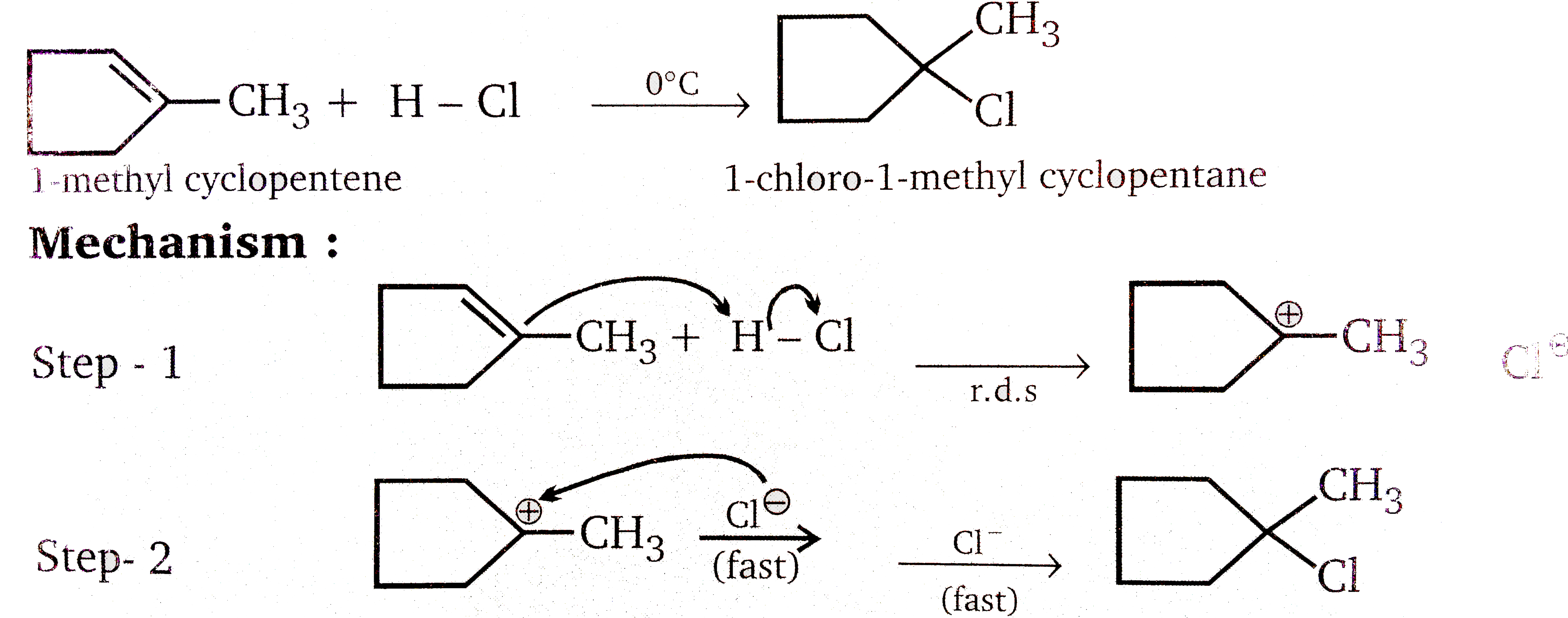 Which of the following is most reactive toward Markovnikov addition?A
Which of the following is most reactive toward Markovnikov addition?A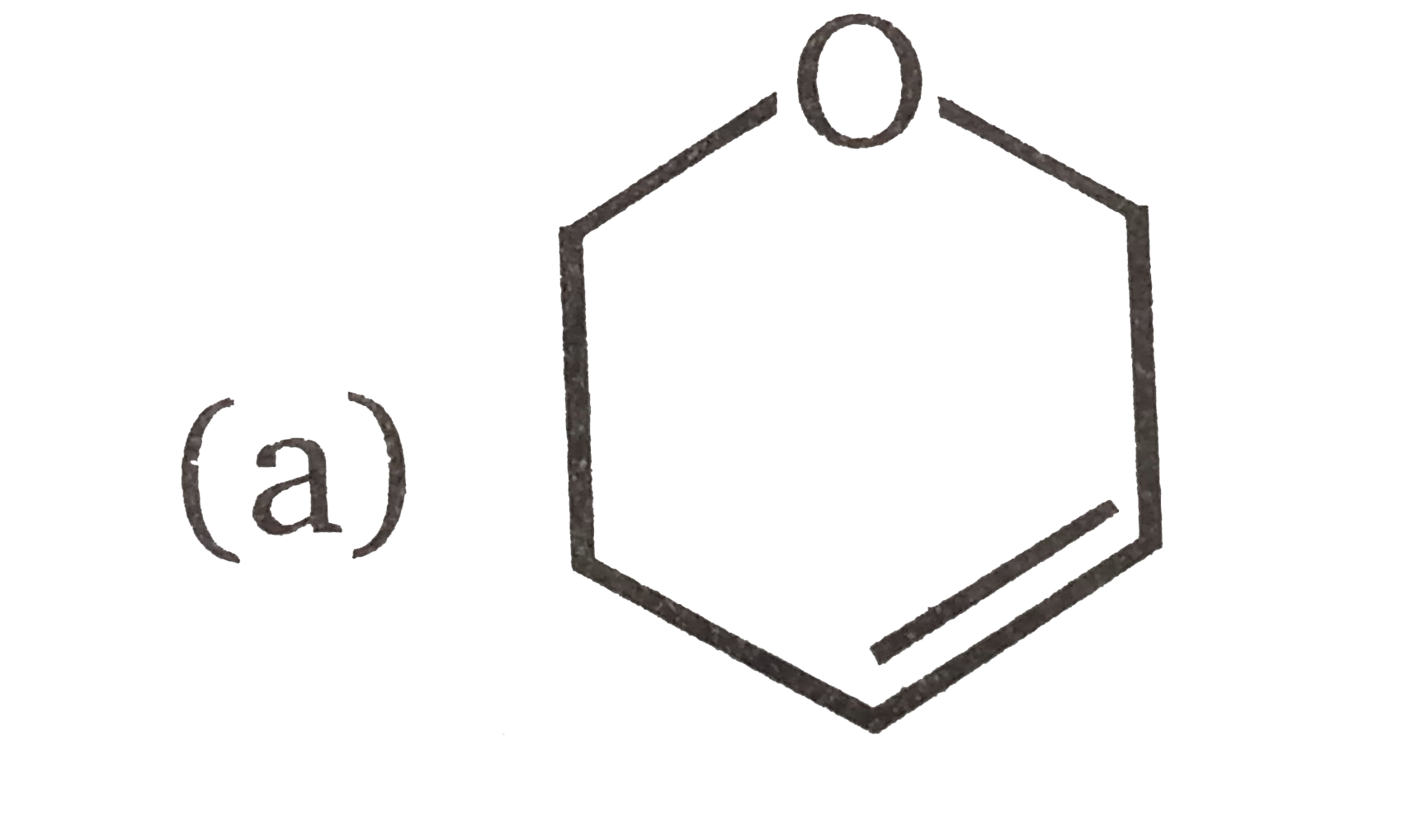 B
B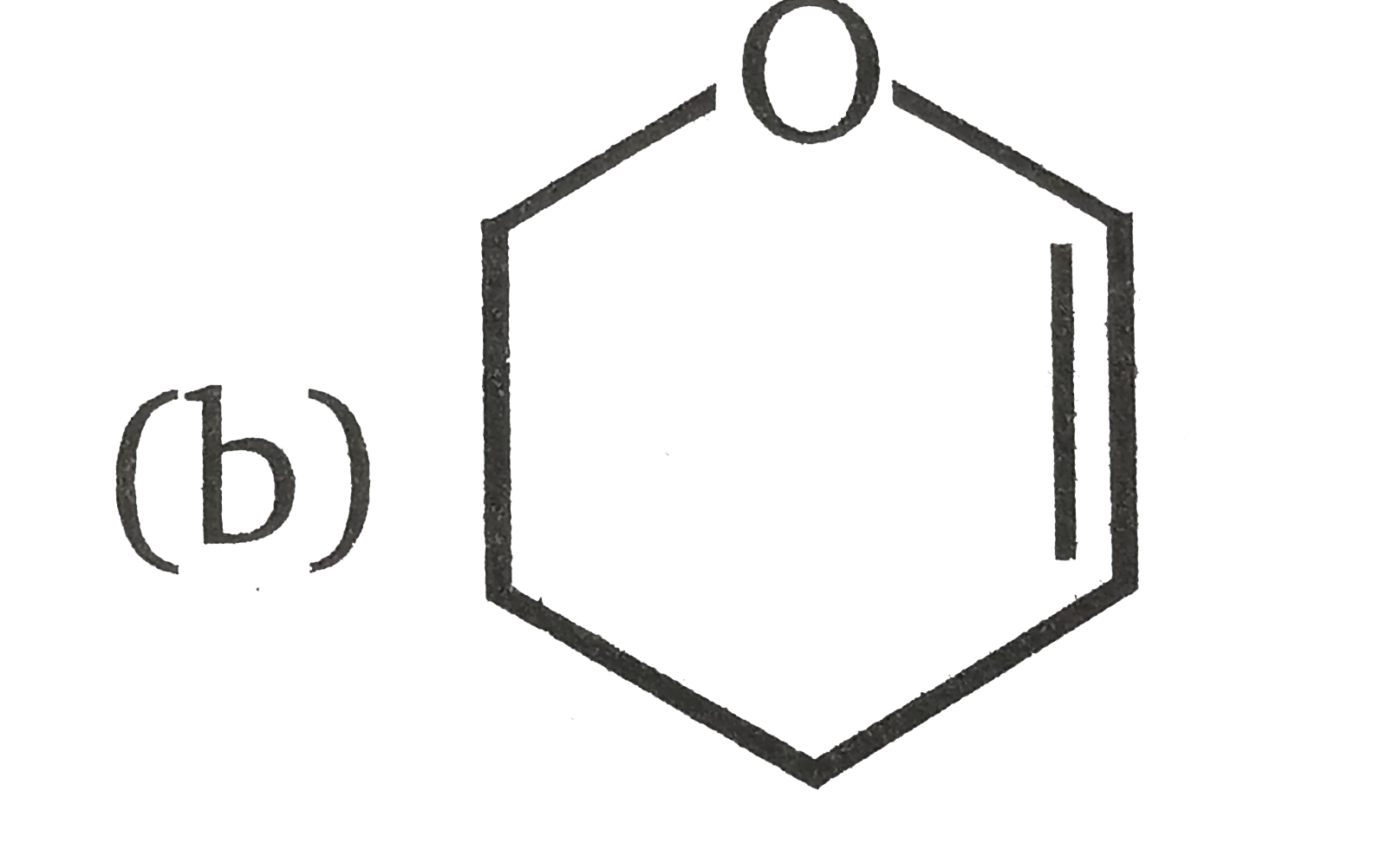 C
C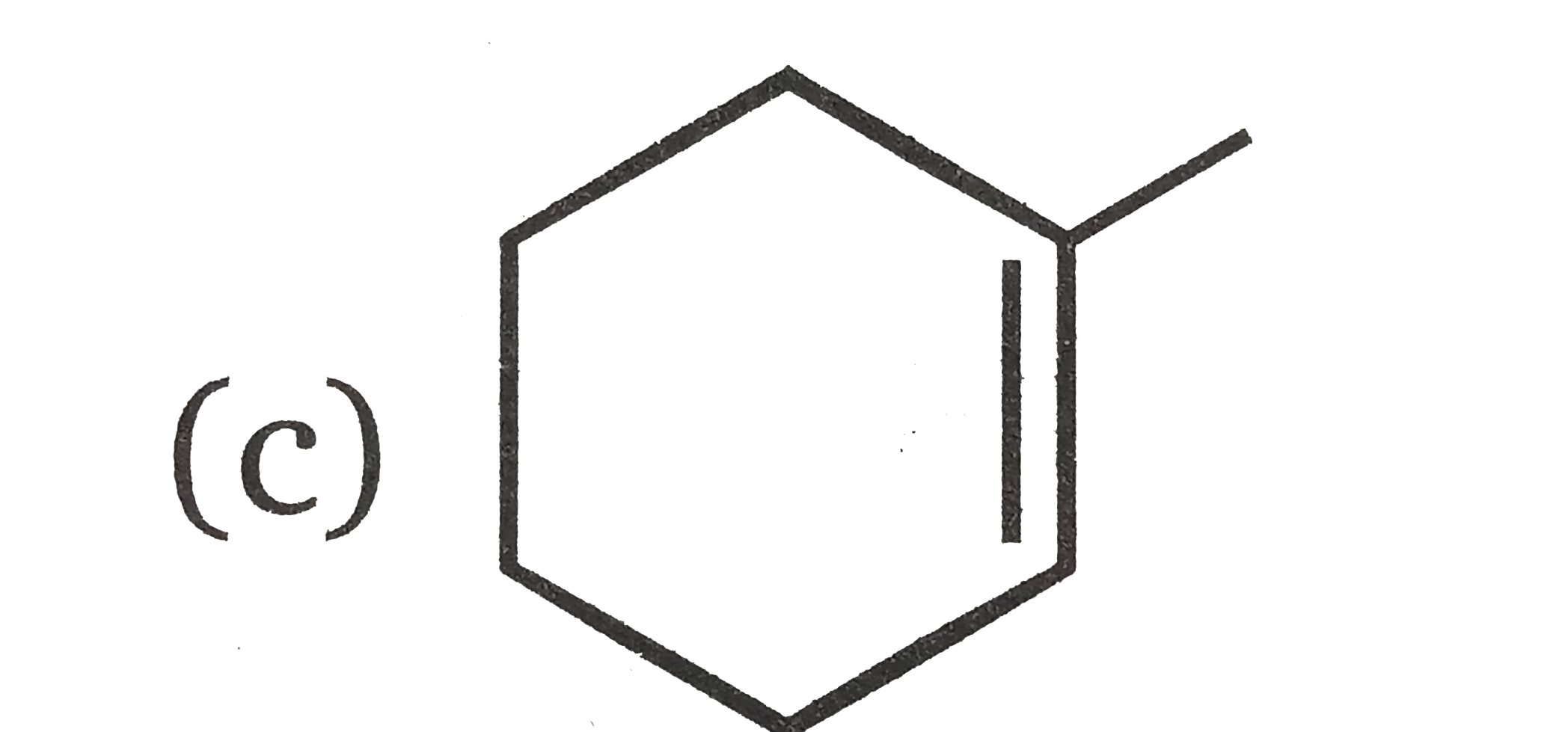 D
D
Vladimir Markovnikov rule:
Alkenes undergo electrophilic addition reactions. It is triggered by the acid acting as a electrophile toward π-electrons of the double bond.
Markovnikov's rule states that when an unsymmetrically substituted alkene reacts with a hydrogen halide, the hydrogen atom adds to the carbon that has the greater number of hydrogen, e.g.,
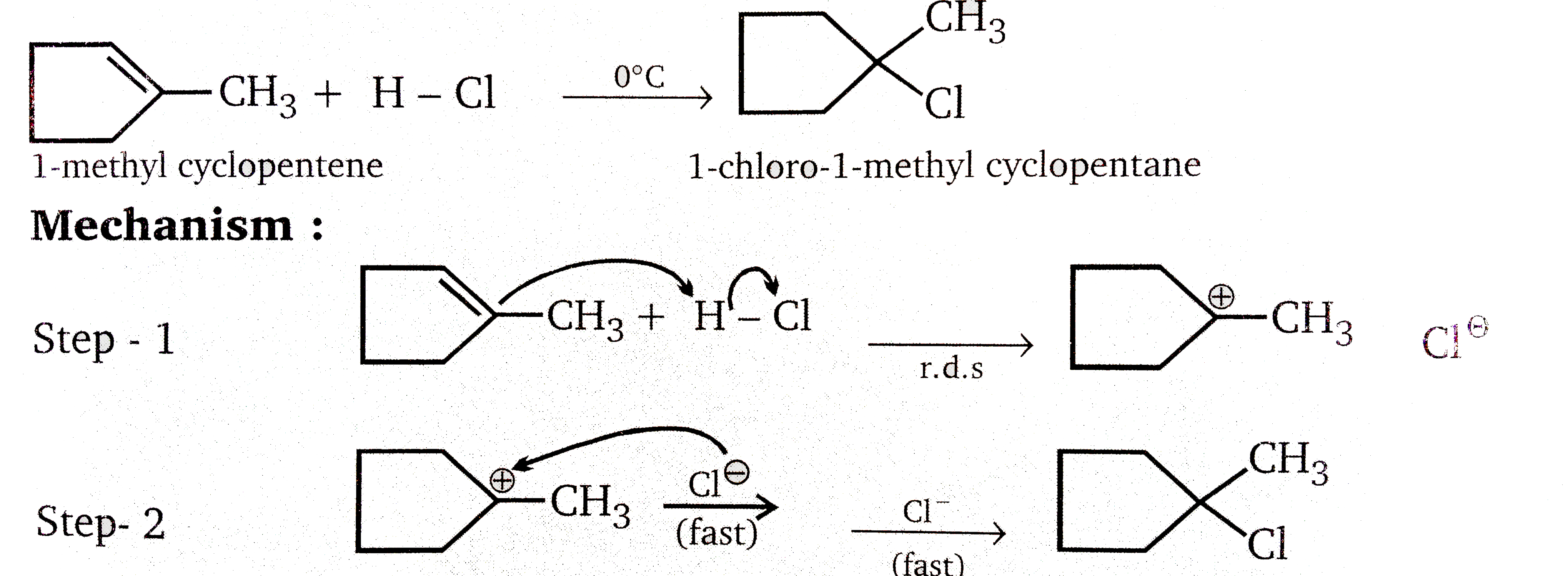
Identify the major products r1,r2 and r3 in the given reactions
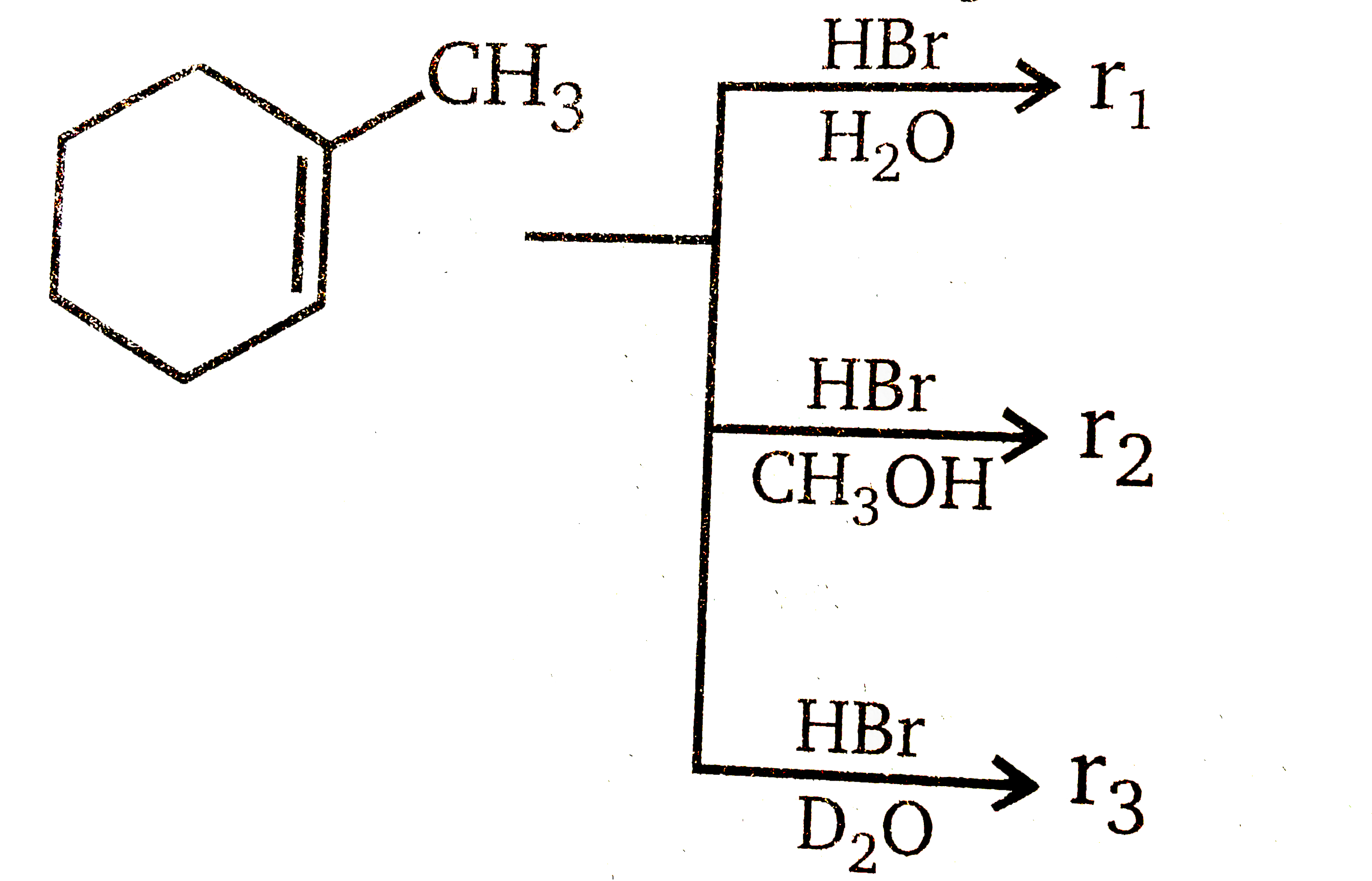 A
A B
B C
C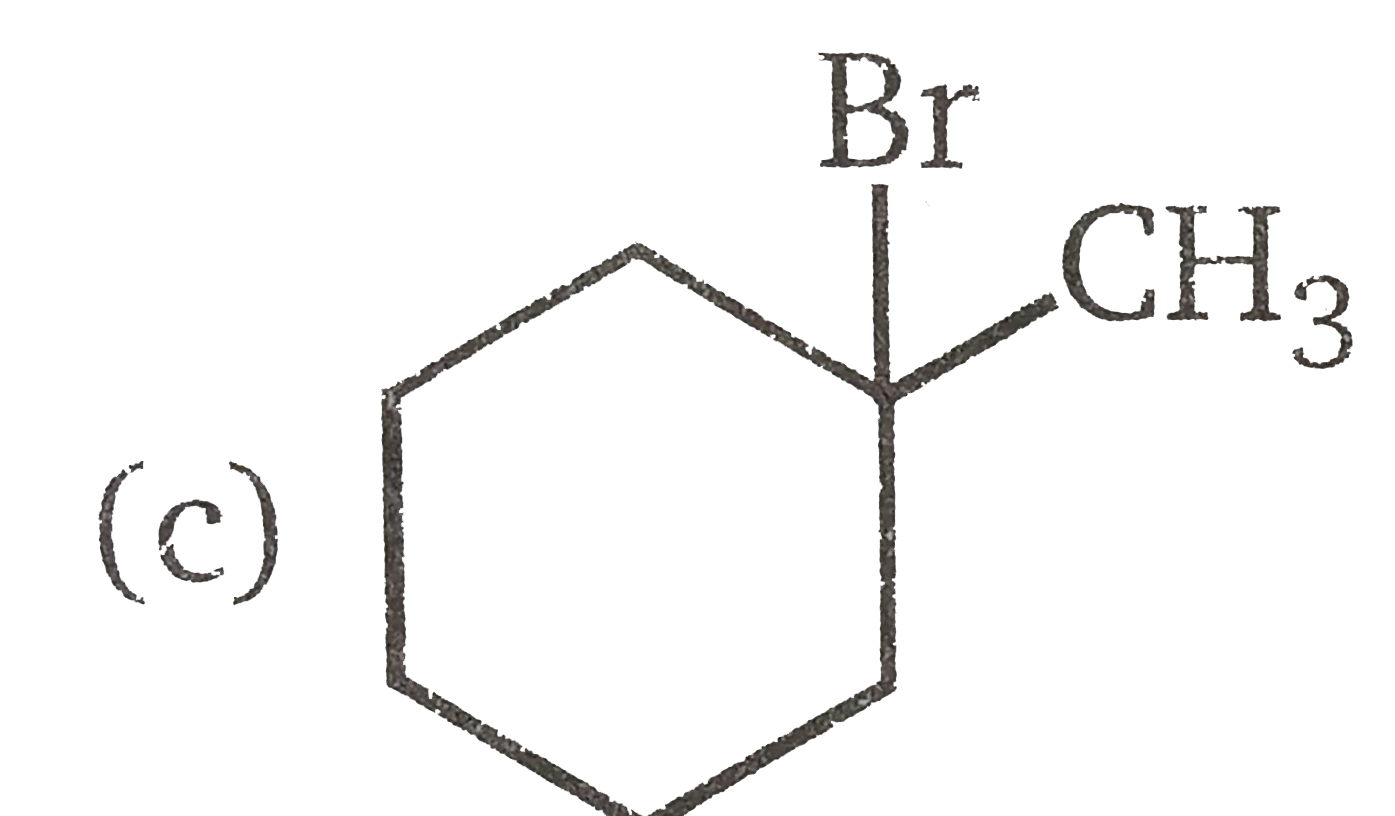 D
D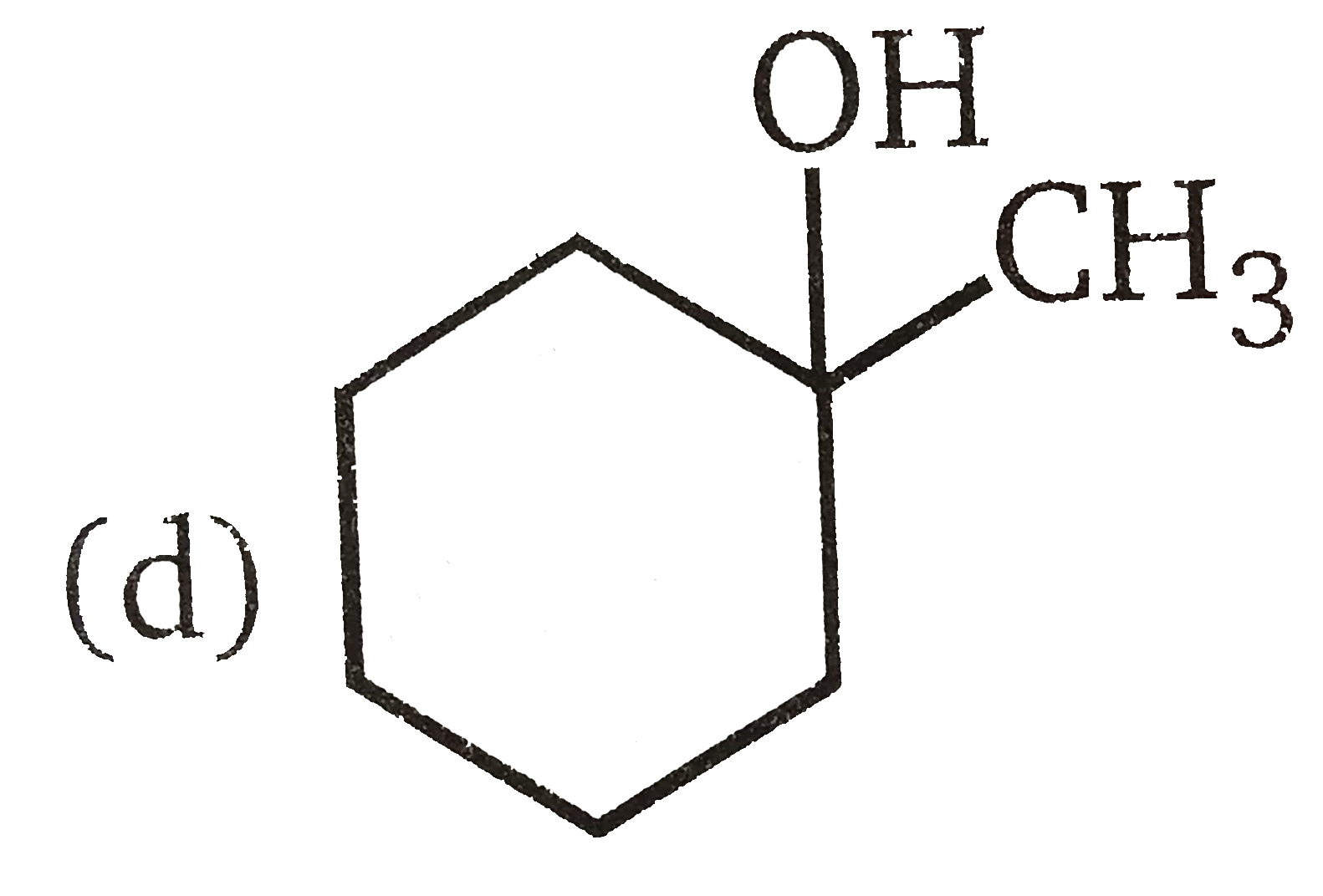
Vladimir Markovnikov rule:
Alkenes undergo electrophilic addition reactions. It is triggered by the acid acting as a electrophile toward π-electrons of the double bond.
Markovnikov's rule states that when an unsymmetrically substituted alkene reacts with a hydrogen halide, the hydrogen atom adds to the carbon that has the greater number of hydrogen, e.g.,
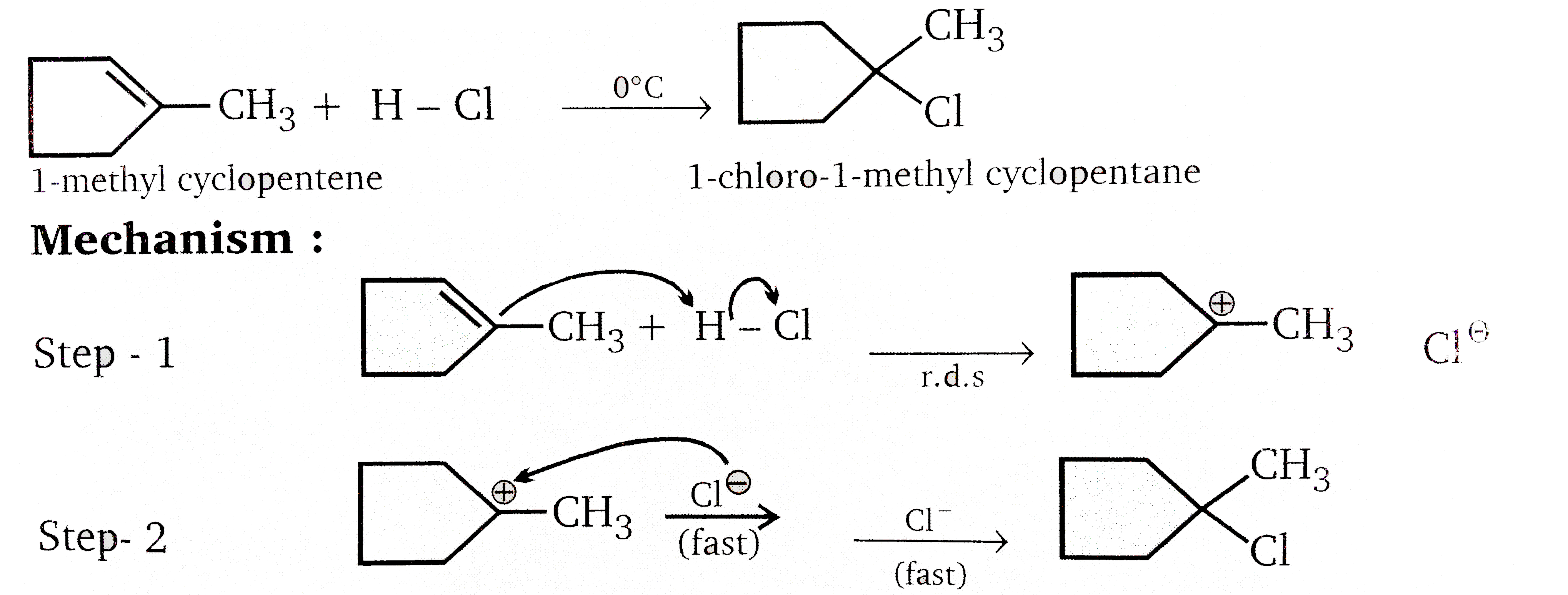
In which of following reactions, carbocation rearrangement is possible?A(CH3)4CH−CH=CH2HCl−−−−−→0∘CB(CH3)3C−CH=CH2HBr−−−−−−−→0∘C/Cl4CPh−CH2−CH=CH2HBr−−−−−→CCl4DAll of these
HBr is a stronger acid than HI because of hydrogen bonding.
View SolutionHBr is a stronger acid than HI because of hydrogen bonding.
View SolutionMatch the following : Column -I Column -II (A) Addition of H2 on alkenes (p) Homogeneous catalysis(B) Hydrolysis of an organic ester (q) Heterogeneous catalysis(C) Conversion of alcohol directly into gasoline (petrol) (r) Shape selective catalysis(D) Hydrolysis of urea (s) Enzyme catalysis (t) Use of ZSM - 5
View SolutionVladimir Markovnikov rule:
Alkenes undergo electrophilic addition reactions. It is triggered by the acid acting as a electrophile toward π-electrons of the double bond.
Markovnikov's rule states that when an unsymmetrically substituted alkene reacts with a hydrogen halide, the hydrogen atom adds to the carbon that has the greater number of hydrogen, e.g.,
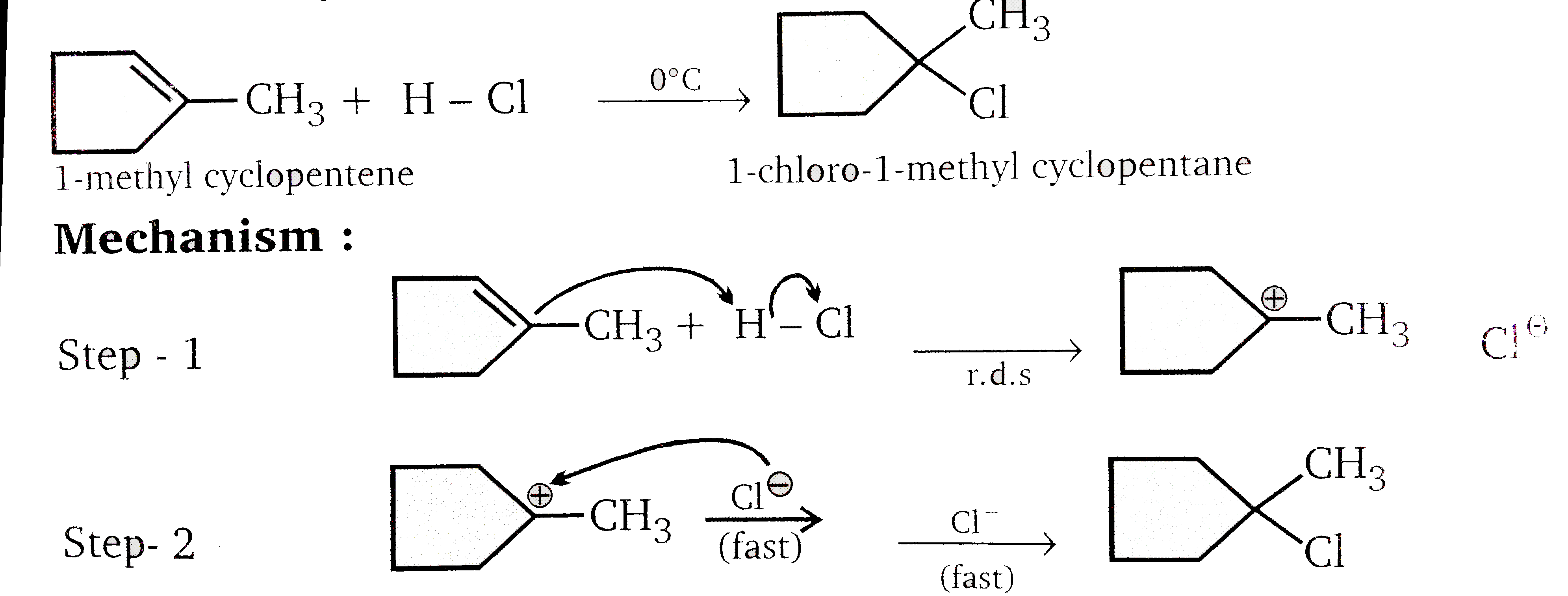 In which of the following reaction, diastereomers will be formed?
In which of the following reaction, diastereomers will be formed?
View SolutionVladimir Markovnikov rule:
Alkenes undergo electrophilic addition reactions. It is triggered by the acid acting as a electrophile toward π-electrons of the double bond.
Markovnikov's rule states that when an unsymmetrically substituted alkene reacts with a hydrogen halide, the hydrogen atom adds to the carbon that has the greater number of hydrogen, e.g.,
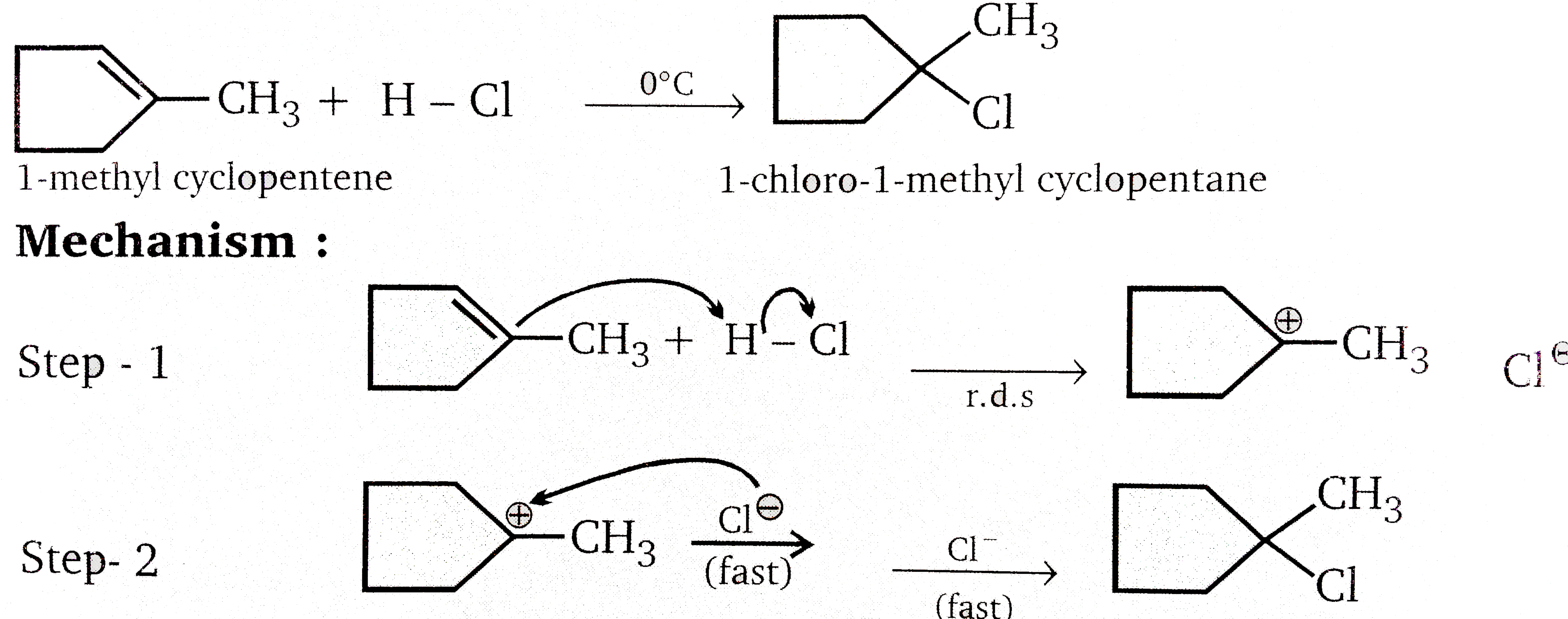
What is the energy profile for the given reaction?
View Solution
